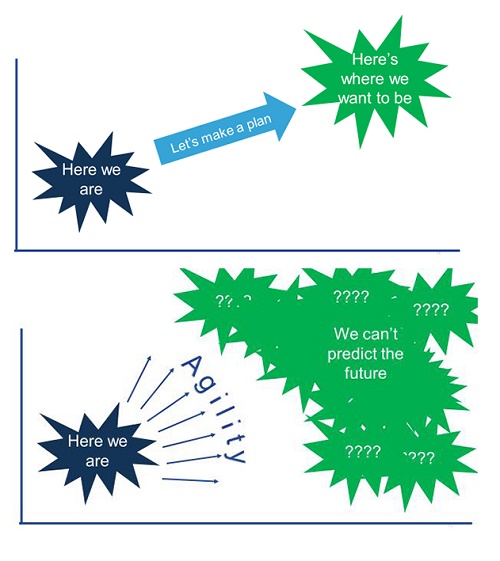The business world in the digital era of global connectivity today face greater challenges. The challenge was mainly caused by changes in the market situation is occurring much faster and more random so that future conditions are becoming increasingly difficult to predict. In the disciplines of strategic management, business environment as this phenomenon is often referred to as VUCA, which is the acronym of volatility, uncertainty, complexity, and ambiguity. The term originally appeared in the military after the Cold War era. When the major countries in the world relative can be grouped into one of three camps, namely the Western block, a block east, and the nonaligned. When the Cold War ended, the world is changing geopolitical conditions, the stronghold of friends and enemies increasingly difficult to identify. VUCA term became more popular when it was used by the US army to describe the conflicts in Afghanistan, Iraq, and Syria.

Conditions VUCA currently faced by many CEOs, because they are required to be able to read what is happening in the market as a result of interaction and mutual hooks ( interplay ) which is getting stronger among political factors, economic, technological, social, regulatory, and environmental. Required a transition paradigm and behavior of the leadership of the organization that was previously more focused on solving problems, the growth projection according to the targets set by the owners of the company, and strategic planning comprehensively, be shifted its focus more to the framing of the problem ( problem framing ), simulations of situations that may occur following risk reduction and adaptive strategies approach nimble ( agile) Responding to developments in the market. Comparison between the paradigm of comprehensive and adaptive approach can be illustrated in the chart.
In a comprehensive paradigm, a strategic plan consists of three main parts are static and linear in nature, namely the analysis of the company's current position, the desired position in the future, and plan activities that need to be done to achieve that future position. Whereas in the paradigm of adaptive, the future is believed to be difficult to predict because the environment is VUCA, the company's position in the future becomes not likely to be able to be at a certain point in accordance early goal, so that from the current position, it is necessary simulations of situations that may be encountered, mitigate risks, and how the company plans to face these situations with more agile.
In his article, Prof. Mike Wade of IMD even provocatively said that the company must immediately forget strategy, embrace agility . Of course he meant not that the company be run without direction because there is no strategy, but companies should be more agile, not rigid, and ready to adapt the design of its strategy when needed. For example, if we look at the strategic plan document conventional taxi company or electronics retailer four years ago, did they anticipate the arrival of the taxi-based players for an online application and marketplace retailing able to dominate the market as it is today? Most likely not.
Does anyone think that the delivery service of food for many years dominated by three major players such as McDonald's, Hoka-Hoka Bento, and Pizza Hut within 2 years dramatically reduced its dominance as the service Go Food of Gojek sudden opportunities small restaurant for is also able to reach the door of the house are the customers? A statement from Manulife CIO, Joe Cooper, describes the growing inability of the past become a base for future predictions. " In the 21 st Century, everything about the past is more and more Google-able, while prediction about the future is more and more unknowable. Thus, agility will replace strategy. "